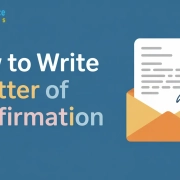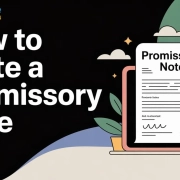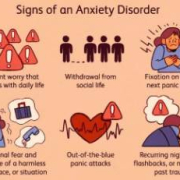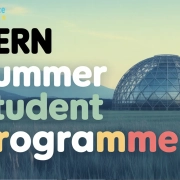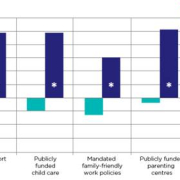How To Write A Letter Of Confirmation: Guide +Templates
Writing something as straightforward as a confirmation letter can sometimes feel more complicated than it should be. Whether you’re new to formal communication or just want to double-check you’re doing it right, knowing how to write a letter of confirmation can make a big difference. It’s not just about being polite; it’s about making sure that both sides are clear on what’s been agreed upon and what’s coming next.
A letter of confirmation is used to affirm something that’s been discussed, decided, or agreed to, like confirming a job offer, a meeting, or an appointment. These letters serve as written records and are important for avoiding misunderstandings. In this guide, we’ll break everything down into manageable parts so you can write a letter that’s clear, complete, and easy to read.
If you’re also interested in general letter styles and templates, check out our guide on How to Write a Formal Letter for layout tips and structure suggestions.
Key Takeaways
- From the start, it’s clear that knowing how to write a letter of confirmation helps avoid confusion by clearly recording what’s been agreed and setting the tone for respectful, professional communication.
- Confirmation letters are necessary in everyday situations like jobs, interviews, reservations, and agreements, and each one gives both the sender and recipient a reliable reference point.
- The five key steps to writing a confirmation letter are starting the letter properly, clearly stating its purpose, providing all relevant details, including contact information, and proofreading before sending it.
- A good confirmation letter includes the purpose, names, dates, agreement terms, a polite closing, and accurate contact details, while avoiding unnecessary or unrelated content.
- Writing tips like keeping your language simple, using bullet points when needed, checking names and dates, and ending the letter politely help you write a clear and effective message whether on paper or email.
What is the Purpose of a Letter of Confirmation?
The main goal of a confirmation letter is to clearly state that an agreement or arrangement has been made. It’s a polite and professional way to let someone know, in writing, that you’ve understood what’s been discussed and that you’re good to go with the next steps. Whether it’s confirming a new job, an interview schedule, a reservation, or a payment receipt, the letter acts like a written confirmation that can be referred to later if needed.
This kind of written communication helps both the sender and the recipient. It reduces confusion, offers proof that something has been agreed on, and keeps everyone on the same page. For example, if your employer sends you an employment confirmation letter, it confirms your position, start date, salary, and other important employment details. That’s useful not just for you, but also for HR records and future reference.
Get Help with Your Confirmation Letter
Need an academic paper on confirmation letters? Place your order today by clicking the ORDER NOW button above to get our expert academic writing help, a plagiarism-free paper.
When Do You Need a Confirmation Letter?
You might not realize how often confirmation letters are used until you look at a few everyday examples. If you’ve ever booked a hotel room online and received a message saying your reservation was confirmed, that’s one type. If you’ve accepted a job offer and got an email from HR confirming your employment status, that’s another.
Here are some common situations where you might need to write or respond to a confirmation letter:
- Employment: Confirming a job offer, start date, salary, or terms of employment.
- Interviews: A company may write to confirm your interview schedule, or you might reply to confirm your attendance.
- Reservations: For travel, events, or accommodations.
- Agreements or Contracts: Confirming the signing of a contract, agreement to terms and conditions, or project contributions.
- Meetings or Appointments: Writing to confirm a business meeting, client call, or consultation.
- Sponsorships: A confirmation sponsor, like a godparent, may confirm their agreement to a role or duty.
Types of Confirmation Letters
Confirmation letters vary depending on what you’re confirming. Each has a different tone or format depending on how formal the situation is and who the recipient is.
- Employment Confirmation Letter: Sent by an employer to confirm an employee’s role, job title, salary, and start date. It’s typically signed by HR or a supervisor and becomes part of the employee’s record.
- Interview Confirmation Letter: This can be written by either the interviewer or the candidate. It helps ensure both parties are clear on the date, time, and location.
- Reservation Confirmation: Whether it’s for a hotel, car rental, or event, these letters confirm that a receipt has been issued and a booking has been made.
- Salary or Appointment Confirmation: These are used to confirm changes in pay, employment status, or promotions.
- Godparent/Sponsorship Confirmation: Often used in religious or formal events where a confirmation sponsor confirms their commitment.
Each type serves a clear purpose. What matters most is that it gives both sides peace of mind and a written record.
How to Write a Letter of Confirmation
When thinking about how to write a letter of confirmation, it’s best to keep things simple, structured, and clear. A good letter helps the reader know exactly what you’re confirming, what the important details are, and what steps (if any) follow. We’ll go through the steps below in detail to help you write an effective confirmation letter.
1. Start the Letter Properly
Start by using the right letter format. Begin with your contact information, followed by the date, and then the recipient’s name, job title, company name, and contact details. Use a respectful greeting such as “Dear Mr./Ms [Last Name]” or just “Dear [First Name]” if you have a closer relationship.
In the opening line, mention right away that you’re writing to confirm something. For example:
- “I’m writing to confirm your appointment scheduled for Tuesday, August 5th.”
- “We are pleased to confirm your employment with our company.”
Keep the tone friendly but formal. This is still a formal document, so avoid being too casual.
2. Clearly State the Purpose of the Letter
Right after the greeting, explain why you’re writing. Keep this section focused on one main idea: what exactly are you confirming? Be direct, polite, and use clear language.
Examples:
- “This letter is to confirm your employment with [Company Name] as a Marketing Manager.”
- “I am writing to confirm our phone interview scheduled for Friday at 10 a.m.”
3. Provide Relevant Details
Once you’ve stated the reason, include the details. These depend on what you’re confirming, but often include:
- Names of the people involved
- Date and time
- Start date for employment
- Salary or contract amount
- Job responsibilities
- Location or address
- Contact information for follow-ups
This part should answer any questions the recipient might have. Think of it as filling in the blanks so they don’t have to ask for more information.
4. Include Contact Information
Make sure to include your email address and phone number. Even if they already have it, placing it here makes it easier for them to respond or ask questions.
Example:
- “If you have any questions, feel free to reach me at [email address] or [phone number].”
4. Use a Standard Letter Format
Stick to a clean, professional format. Use a standard font like Arial or Times New Roman, 11 or 12-point size. Keep the letter left-aligned, single-spaced, and with clear paragraphs.
Here’s a simple layout:
- Your name and contact info
- Date
- Recipient’s name and contact info
- Greeting
- Body of the letter (3–4 paragraphs)
- Closing and signature
5. Proofread and Send It
Before you hit send or print the letter, take a minute to proofread it. Check for grammar, spelling, and missing details. Make sure everything sounds clear and polite.
If you’re sending it by email, write a subject line like “Confirmation of Employment – [Your Name]” or “Meeting Confirmation – August 5th.” Attach any relevant documents and sign off professionally.
Write It the Right Way
If writing a confirmation letter feels overwhelming, we’ve got your back. Place your order today by clicking the ORDER NOW button above to get our expert academic writing help, a plagiarism-free paper.
What Should You Include in a Confirmation Letter?
Here’s a checklist you can use:
- The purpose of the letter
- Names and roles (e.g., employee, employer)
- Key dates and times (e.g., appointment, joining date)
- Agreement details (e.g., salary, terms and conditions)
- A polite closing
- Your signature and contact information
Avoid unnecessary details or overly long explanations. Keep it focused.
Useful Writing Tips for an Effective Confirmation Letter
- Keep it simple: Use plain language and short sentences.
- Be direct: Let the reader know exactly what you’re confirming.
- Stick to the point: Don’t bring in unrelated topics.
- Use bullets if you need to list multiple details.
- Double-check names and dates to avoid errors.
- Use a clear subject line if you’re sending an email.
- End politely: Say thank you or express appreciation.
For guidance on structuring complaint or formal requests in written communication, you may find our article on How to Write a Complaint Letter helpful as it covers tone, clarity, and request phrasing.
Confirmation Letter Templates
Confirmation Letter for Employee
[Your Name]
[Your Position]
[Company Name]
[Address]
[City, State, ZIP Code]
[Date]
[Recipient Name]
[Recipient Position]
[Company Name]
[Address]
[City, State, ZIP Code]
Subject: Employment Confirmation Letter
Dear [Recipient Name],
We are pleased to confirm your employment with [Company Name] as a [Position]. Your start date is [Start Date], and your monthly salary is [Salary]. Please refer to the attached document for additional terms and conditions.
Sincerely,
[Your Name]
[Your Position]
Salary Confirmation Letter
[Your Name]
[Your Position]
[Company Name]
[Address]
[City, State, ZIP Code]
[Date]
[Recipient Name]
[Address]
[City, State, ZIP Code]
Subject: Salary Confirmation Letter
Dear [Recipient Name],
This is to confirm that [Employee Name] is employed with [Company Name] as [Position] and is receiving a gross monthly salary of [Amount]. For further inquiries, please contact our HR department.
Sincerely,
[Your Name]
[Your Position]
Internship Confirmation Letter
[Your Name]
[Your Position]
[Company Name]
[Address]
[City, State, ZIP Code]
[Date]
[Recipient Name]
[Address]
[City, State, ZIP Code]
Subject: Internship Confirmation
Dear [Recipient Name],
We are happy to confirm your internship at [Company Name] as a [Role]. Your internship period will start on [Start Date] and end on [End Date]. A stipend of [Amount] will be provided monthly. Please reach out if you have further questions.
Best regards,
[Your Name]
[Your Position]
Conclusion
Now that you know how to write a letter of confirmation, the whole idea feels a lot less intimidating, right? Whether you’re confirming a job, an interview, or a simple appointment, this kind of written confirmation builds trust and clarity. Stick to the basics, double-check your details, and you’ll be writing effective, professional letters in no time.
Academic Writing, Stress-Free
From employment confirmations to meeting requests, we can handle your academic letter assignment with precision. Place your order today by clicking the ORDER NOW button above to get our expert academic writing help, plagiarism free paper.
How To Write A Confirmation Letter FAQs
What if I don’t have all the details yet?
You can still send a confirmation letter and mention that certain information will be provided later. Just be honest and clear about what’s pending.
Can I confirm something over email?
Absolutely. An email is perfectly acceptable, especially in modern business. Just follow the same structure and tone as a formal letter.
Do I have to include a signature?
Yes, if it’s a physical letter. For emails, a typed full name and contact details will usually do the trick unless a digital signature is required.
What if the recipient doesn’t respond?
Wait a few days, then follow up politely. Sometimes emails get buried, and a gentle nudge is all that’s needed.
Experienced writer and dedicated professor with a passion for crafting compelling narratives and nurturing the next generation of critical thinkers
academhelper.com academhelper.com
"Looking for a Similar Assignment? Get Expert Help at an Amazing Discount!"


